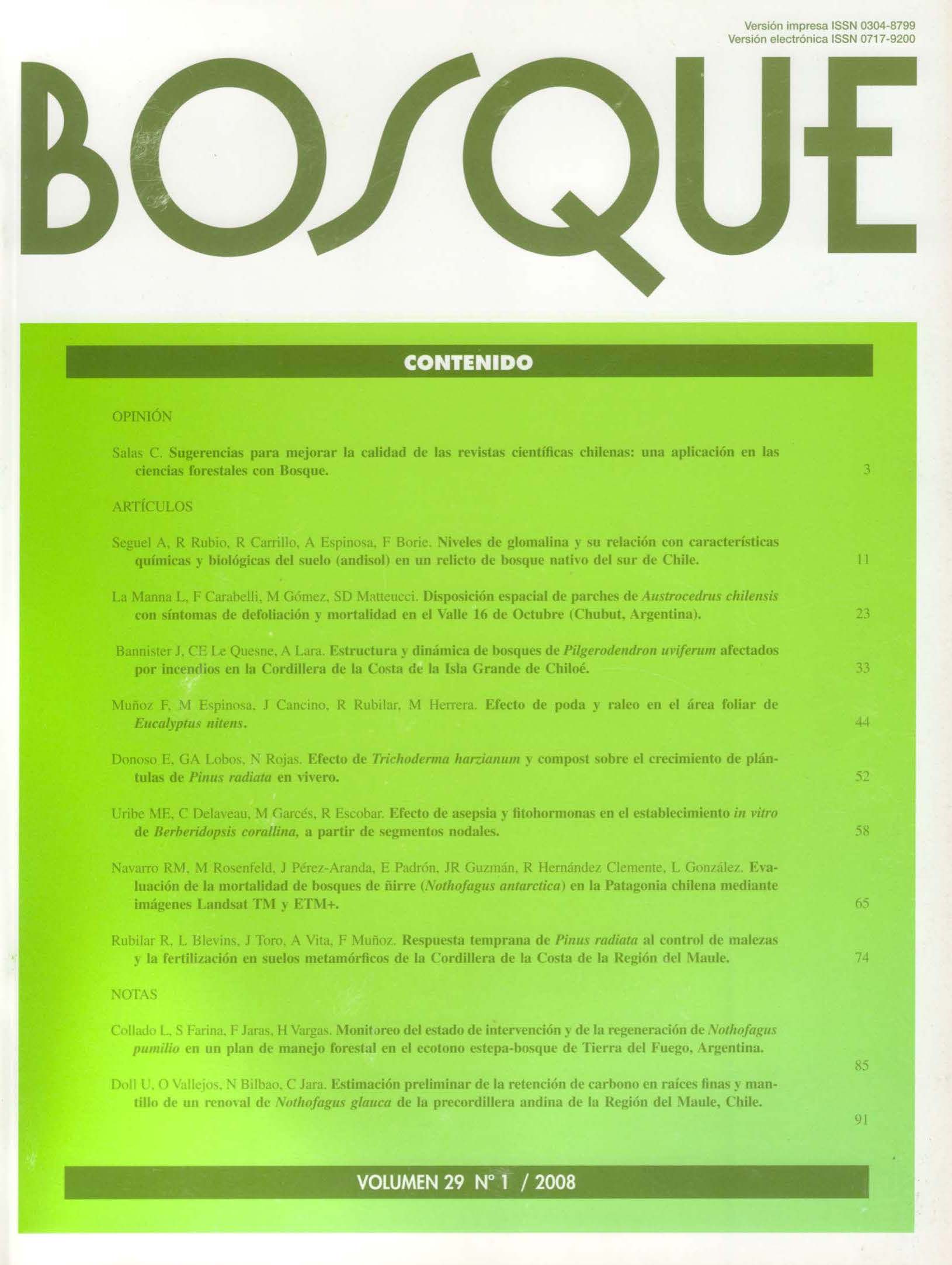Levels of glomalin and their relation with soil chemical and biological soil (andisol) characteristics in a relic of native forest of southern Chile
Main Article Content
Abstract
In forest ecosystems the arbuscular mycorrhizal fungi (AMF) play an important role in the carbon accumulation by a glicoprotein production named glomalin that participate in the soil aggregate stability. Therefore, the aim of this study was to quantify the glomalin content of an andisol of southern Chile under adult and mixed forest and to determine the relationships with fungal and soil chemical characteristics. The study was at two slopes and exposition (NE and SW). The forest vegetation was principally dominated by species that develop ectomycorrhiza, but the underforest species, shrubs and climbers, developed arbuscular mycorrhiza with high glomalin production capacity and with amounts higher than those determined in agroecosystems for the same area. Glomalin concentration in the upper horizon ranged between 44.2 and 46.1 mg g-1 representing between 8.9 and 10.4 % of the total soil carbon, decreasing their content as depth increased. The slope and exposition type influenced glomalin content both, total and easily extractable. Therefore, NE with smooth slope presented the major content of total glomalin, while SW with sharp slope showed high levels of easily extractable glomalin. Total glomalin showed close relationships with the spores AMF (r = 0.84, P < 0.001) and with soil organic matter (r = 0.83, P < 0.001). Data obtained in this study suggest that it is necessary to preserve the forest ecosystems for keeping up the mycorrhizal potential and reinforce the statement that glomalin can be an important carbon sink contributing to soil carbon retention.

